Home>Articles>Why Did The President Put Vegetables In His Blender
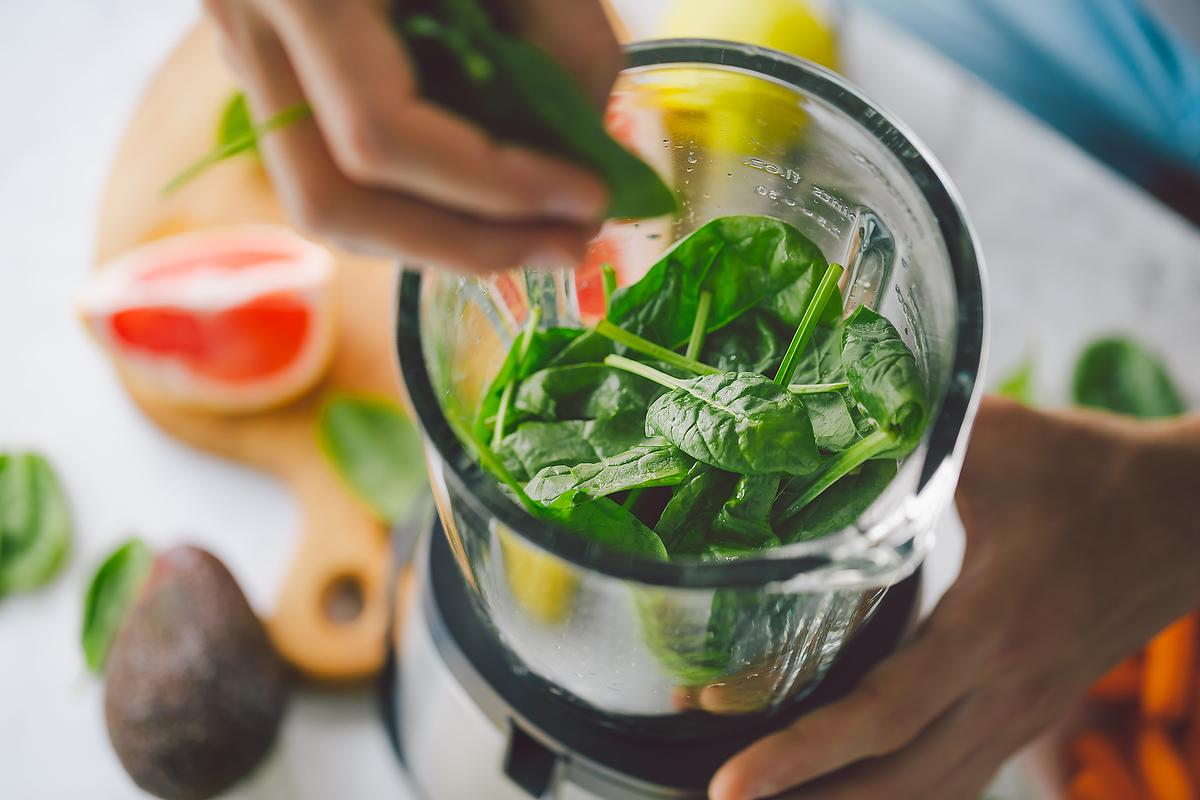

Articles
Why Did The President Put Vegetables In His Blender
Modified: August 28, 2024
Discover the surprising reason behind the President's blender obsession with vegetables. Dive into this collection of insightful articles on the topic and broaden your perspective.
(Many of the links in this article redirect to a specific reviewed product. Your purchase of these products through affiliate links helps to generate commission for Storables.com, at no extra cost. Learn more)
Introduction
Welcome to the intriguing world of politics, where even ordinary kitchen appliances can become the center of attention. In recent news, there has been quite a buzz surrounding the President’s peculiar choice of putting vegetables in his blender. Many have wondered why the leader of a nation would engage in such an unconventional practice. In this article, we will delve deep into the vegetable-blending phenomenon, exploring the background behind the President’s decision and the potential implications it may have.
It is no secret that the President’s dietary preferences have always been a topic of interest for the public. From the choice of breakfast cereal to the types of sandwiches enjoyed for lunch, every culinary decision seems to carry some significance. However, the recent revelation of the President’s affinity for blended vegetables has taken this intrigue to a whole new level.
Before we delve into the motives behind the President’s decision, let’s establish the significant health benefits associated with vegetables. Leafy greens, vibrant peppers, and a rainbow of other vegetable varieties are renowned for their rich nutrient content. They are a powerhouse of essential vitamins, minerals, and antioxidants that contribute to overall well-being.
Now, on to the President’s preferences. It has been widely reported that the President is a health-conscious individual, prioritizing a well-balanced diet as part of his daily routine. His love for fitness and nutrition is evident, with regular visits to the gym and a keen interest in promoting a healthy lifestyle.
So why the decision to blend vegetables instead of consuming them in their natural form? The answer lies in the convenience and efficiency that blending offers. In today’s fast-paced world, time is a precious commodity, especially for someone in a position of leadership. Blending vegetables allows a person to consume a significant amount of nutrients in a quick and easy manner.
The President’s decision to incorporate blended vegetables into his diet has sparked a range of reactions from the public. Some applaud his commitment to health and wellness, viewing it as a positive inspiration for others to prioritize their well-being. On the other hand, there have been misconceptions and misconstrued ideas surrounding the President’s choice.
For instance, some critics argue that blending vegetables diminishes the nutritional value or alters the taste. However, experts in the field have debunked these claims, assuring that blending still retains the essential nutrients while providing a palatable experience.
The President’s use of a blender for vegetables is not the first time kitchen appliances have found their way into the political arena. In recent years, we have seen politicians utilizing other creative cooking methods to engage with their constituents. From baking cookies for campaign events to showcasing culinary skills on cooking shows, politicians are finding unique ways to connect with voters.
Key Takeaways:
- Blending vegetables in a high-quality blender offers a convenient and efficient way to consume essential nutrients, showcasing the President’s commitment to health and wellness amidst a busy schedule.
- The President’s innovative use of a blender for vegetables has sparked a broader trend of individuals seeking creative and time-efficient methods to prioritize their nutrition, inspiring diverse approaches to healthy eating.
Background of the President’s Blender Use
To understand the President’s affinity for blending vegetables, it is essential to delve into the background of his blender use. The President’s interest in maintaining a healthy lifestyle has been evident throughout his career, but it was during his time as a senator that he discovered the benefits of blending.
During a hectic campaign season, the President found himself struggling to balance his demanding schedule with his commitment to healthy eating. Long days on the campaign trail often left him with limited time for meal preparation, resulting in fast food and unhealthy snacks becoming the norm.
Determined to improve his dietary habits and maintain his energy levels, the President began researching alternative methods to consume nutrient-dense foods in a time-efficient manner. That’s when he stumbled upon the concept of blending.
Recognizing the potential of blending to provide a quick and convenient way to consume vegetables, the President purchased a high-quality blender and began experimenting with various vegetable combinations. He quickly mastered the art of creating delicious and nutritious vegetable smoothies that could be consumed on the go.
As his blended vegetable concoctions became a regular part of his diet, the President noticed a significant improvement in his overall well-being. He felt more energized, mentally sharp, and noticed positive changes in his physical health. Inspired by these personal benefits, he started sharing his newfound love for blended vegetables with his colleagues and staff.
Word quickly spread about the President’s unique dietary approach, leading to curiosity and fascination among both supporters and critics. The media coverage surrounding the President’s blender use catapulted the trend into the public eye, sparking conversations and raising questions about its legitimacy and effectiveness.
Despite the initial skepticism, the President’s commitment to incorporating blended vegetables into his diet remained strong. He saw it as not just a personal choice but also an opportunity to encourage others to prioritize their health and well-being.
The President’s blender use began to gain traction, inspiring a wave of interest in the general population. Blending vegetables became a trending topic in the health and wellness industry, with numerous individuals following the President’s example and incorporating blended vegetables into their own routines.
It is worth noting that the President’s blender use extends beyond vegetables. He also utilizes the versatile appliance to create refreshing fruit smoothies, protein shakes, and even homemade soups. By exploring the diverse possibilities of blending, he continues to showcase the benefits of incorporating whole foods into one’s diet.
The President’s use of a blender has not only impacted his personal health but has also had a ripple effect on the perception of healthy eating and nutrition. As the leader of a nation, his choices and actions set an example for others to follow, and his advocacy for blending vegetables serves as a reminder that taking care of one’s health should be a priority.
The Health Benefits of Vegetables
Vegetables are a cornerstone of a healthy diet, providing a wide array of essential nutrients and health benefits. Whether consumed in their natural form or blended into smoothies, vegetables offer a host of advantages that contribute to overall well-being.
One of the most significant benefits of vegetables is their rich content of vitamins and minerals. They are a fantastic source of essential vitamins like vitamin A, vitamin C, and vitamin K, which play crucial roles in maintaining a robust immune system, supporting healthy skin, and promoting vision health.
In addition to vitamins, vegetables are packed with minerals such as potassium, magnesium, and calcium. These minerals are vital for proper cell function, maintaining healthy bones and teeth, and regulating blood pressure.
Furthermore, vegetables are known for their antioxidant properties, thanks to the presence of compounds like beta-carotene, lycopene, and flavonoids. Antioxidants help protect the body from the damaging effects of free radicals, which can contribute to chronic diseases like cancer, heart disease, and age-related macular degeneration.
Another benefit of vegetables is their high fiber content. Fiber plays a crucial role in digestive health, promoting regular bowel movements and preventing constipation. It also helps regulate blood sugar levels, improves satiety, and aids in weight management.
Additionally, vegetables are generally low in calories and high in water content, making them an ideal choice for those looking to maintain or lose weight. Their high fiber content and low energy density make them filling without adding excessive calories.
Moreover, vegetables are rich in phytochemicals, which are natural compounds that give plants their vibrant colors and distinctive flavors. These phytochemicals have been extensively studied for their potential health benefits, including reducing the risk of chronic diseases such as cancer, cardiovascular disease, and neurodegenerative disorders.
When vegetables are consumed in their natural form, their crunchiness and texture provide a satisfying sensory experience. However, blending vegetables into smoothies offers its own set of advantages. Blending helps break down the cell walls of vegetables, making their nutrients more easily absorbed by the body.
Blended vegetable smoothies also provide a convenient way to incorporate a variety of vegetables into one’s diet. This can be particularly beneficial for those who struggle to consume recommended servings of vegetables each day. With just a few minutes of blending, it becomes effortless to enjoy a delicious and nutrient-dense beverage packed with the goodness of multiple vegetables.
Overall, whether consumed in their natural state or blended into smoothies, vegetables offer numerous health benefits. From providing essential vitamins and minerals to delivering powerful antioxidants and fiber, vegetables are a valuable addition to a well-balanced diet. So, follow the President’s lead and prioritize the consumption of these nutritional powerhouses to support your health and well-being.
The President’s Dietary Preferences
The President has long been known for his commitment to maintaining a healthy lifestyle through his dietary preferences. His approach to food reflects a conscious effort to prioritize nutrient-dense options and make informed choices for his overall well-being.
One key aspect of the President’s dietary preferences is his emphasis on whole, unprocessed foods. He recognizes the importance of consuming foods in their natural form and avoiding highly processed and refined products that are often high in added sugars, unhealthy fats, and artificial ingredients.
The President’s plate is typically filled with a colorful assortment of fruits and vegetables, lean proteins, whole grains, and healthy fats. By incorporating a wide variety of foods from different food groups, he ensures a balanced intake of essential nutrients.
When it comes to protein, the President favors lean sources such as poultry, fish, tofu, and legumes. These choices provide ample amounts of high-quality protein while minimizing unhealthy saturated fats commonly found in red and processed meats.
Whole grains, such as brown rice, quinoa, and whole wheat bread, are staples in the President’s diet. These grains are rich in fiber, vitamins, and minerals, and provide a slower release of energy compared to refined grains, helping to sustain him throughout the day.
The President is also known for his love of fruits, incorporating a wide variety into his daily routine. From apples and oranges to berries and tropical favorites, fruits provide a natural source of vitamins, minerals, and antioxidants that support immune function and overall health.
Additionally, the President understands the importance of healthy fats in his diet. He chooses sources like avocados, nuts, seeds, and olive oil, which provide monounsaturated and polyunsaturated fats, essential for heart health and proper brain function.
While the President follows a predominantly plant-based diet, he also acknowledges the role of dairy and dairy alternatives in a balanced eating plan. He incorporates low-fat milk, yogurt, and cheese into his diet, as well as plant-based alternatives like soy or almond milk, ensuring an adequate intake of calcium and other nutrients.
Fluid intake is another crucial aspect of the President’s dietary preferences. He recognizes the importance of staying hydrated and typically opts for water as his primary beverage. However, he occasionally enjoys herbal teas or freshly squeezed juices as well.
It is important to note that the President’s dietary preferences are not static and may evolve over time due to various factors, including personal taste, health considerations, and evolving nutritional research. Nevertheless, his commitment to maintaining a healthy lifestyle through mindful eating choices serves as an inspiration for individuals from all walks of life.
By prioritizing whole, nutrient-dense foods and incorporating a variety of colors and flavors onto his plate, the President showcases the power of nutrition in promoting overall well-being. His dietary preferences demonstrate that a balanced and enjoyable approach to food can be incorporated into even the busiest of lifestyles.
When blending vegetables, add a small amount of liquid to help the blending process. This could be water, broth, or a splash of juice. This will help the vegetables break down more easily and create a smoother texture.
The President’s Decision to Blend Vegetables
The President’s decision to blend vegetables can be attributed to several factors, all centered around his commitment to maintaining a healthy lifestyle and optimizing his nutrition. Blending vegetables offers a convenient and efficient way to consume a significant amount of nutrients in a quick and easy manner.
First and foremost, the President recognizes the importance of consuming an adequate amount of vegetables for optimal health. However, the demands of his busy schedule often make it challenging to devote time to meal preparation or sit down for a proper meal. Blending vegetables allows him to obtain the necessary nutrients without sacrificing precious time.
Blending vegetables breaks down their cell walls, making their nutrients more easily absorbed by the body. The President understands that although chewing vegetables is necessary for digestion, blending can enhance the availability of nutrients as it pre-digests the vegetables, making their nutrients more readily accessible for absorption.
In addition, blending vegetables allows for a wider variety of vegetables to be consumed in a single serving. The President can combine different vegetables that offer unique health benefits and flavors, creating a nutrient-dense and delicious beverage. This not only saves time but also ensures a diverse intake of vitamins, minerals, antioxidants, and dietary fiber.
The President’s decision to blend vegetables also addresses another common challenge many people face: taste preferences. While some individuals may find it difficult to incorporate certain vegetables into their diet due to taste or texture, blending can mask these factors, making it easier to consume a broader range of vegetables and reap their nutritional benefits.
Moreover, blending vegetables allows the President to explore creative combinations and experiment with flavors. He can incorporate herbs, spices, and other ingredients to enhance the taste and create delicious and satisfying blends that appeal to his palate. This ensures that the consumption of vegetables remains an enjoyable experience rather than a chore.
Another benefit of blending vegetables is the potential to reduce food waste. By utilizing slightly wilted or less visually appealing vegetables, the President can still extract their nutrients and minimize the amount of food that goes to waste. This aligns with his commitment to sustainable living and reducing environmental impact.
It is important to note that while blending vegetables provides convenience and numerous health benefits, it should not replace the consumption of whole vegetables entirely. Chewing and eating whole vegetables offer extra benefits, such as promoting dental health, engaging the senses, and contributing to a well-rounded eating experience.
The President’s decision to blend vegetables is a testament to his innovative approach to nutrition and his willingness to adapt to the demands of his lifestyle. It serves as a reminder that there is no one-size-fits-all approach to healthy eating and that finding creative solutions that work for each individual is key to maintaining a nutritious diet.
By incorporating blended vegetables into his routine, the President showcases a practical and effective strategy to obtain an abundance of essential nutrients in a time-efficient and enjoyable manner. His choice inspires others to explore alternative methods of consuming vegetables and prioritize their overall health and well-being.
Read more: Why Did My Blender Stop Working
Public Reaction and Misconceptions
The President’s decision to blend vegetables has sparked a range of reactions from the public, alongside a few misconceptions that have circulated. While many have applauded his commitment to health and wellness, there have been misunderstandings surrounding the efficacy and implications of blending vegetables.
One common misconception is the belief that blending vegetables diminishes their nutritional value. Some individuals argue that the process of blending exposes vegetables to oxidation and heat, leading to a loss of vitamins and minerals. However, it is important to note that while there may be slight nutrient degradation due to exposure to air and heat, the overall nutritional impact remains substantial. Blending still retains the essential nutrients present in the vegetables, ensuring that consumers can benefit from their rich vitamin, mineral, and antioxidant content.
Another misconception is that blending vegetables alters their taste and texture, resulting in a less enjoyable consumption experience. While blending does create a different texture and consistency compared to eating vegetables in their natural form, it does not necessarily compromise the taste. In fact, blending vegetables can enhance their flavors by combining them with complementary ingredients such as fruits, herbs, and spices. The President’s creative blending techniques demonstrate that delicious and nutritious vegetable blends can be crafted to suit individual preferences.
Public reaction to the President’s vegetable blending has been largely positive, with many individuals recognizing the convenience and efficiency it offers. The blending trend has ignited a broader interest in incorporating more vegetables into daily diets, inspiring people to explore new ways of consuming these nutrient powerhouses.
Additionally, the President’s blending approach has served as an inspiration for those who struggle to meet their recommended daily servings of vegetables. Blending offers a convenient solution by providing an easy-to-consume alternative that ensures individuals can still obtain the vital nutrients found in vegetables, even when time is limited.
However, it is worth noting that there is still a segment of the population that remains skeptical about the effectiveness of blended vegetables as a healthy choice. Critics argue that consuming whole vegetables is the only way to fully benefit from their fiber content and exercise chewing muscles. While these arguments have validity, it is crucial to understand that blending vegetables can complement a well-rounded diet that includes a variety of food textures and consumption methods.
As with any dietary choice, it is important to consider individual preferences, nutritional needs, and lifestyle factors when determining the best approach to vegetable consumption. The President’s decision to blend vegetables should be seen as one option among many for incorporating nutritious vegetables into one’s diet.
Overall, the public reaction to the President’s vegetable blending has been positive, with the majority recognizing the numerous benefits it offers. By dispelling misconceptions and promoting the efficacy of blended vegetables, individuals can embrace this innovative approach to nutrition and enjoy the many health advantages it provides.
Other Creative Uses of Blenders in Politics
While the President’s decision to blend vegetables has certainly caught the public’s attention, it is not the only instance where kitchen appliances have found their way into the political sphere. In recent years, politicians have shown their culinary prowess and utilized blenders in various creative ways to engage with their constituents and promote their political agenda.
One notable example is the use of blenders for charity events and fundraisers. Politicians have organized smoothie-making competitions, where they blend up delicious concoctions to raise money for charitable causes. These events not only showcase the politicians’ blending skills but also provide an opportunity for community engagement and philanthropy.
In addition, blenders have been incorporated into campaign strategies, particularly during election seasons. Politicians have set up smoothie stands or pop-up cafes in public spaces, where they blend fresh and nutritious beverages for voters. This novel approach not only attracts attention but also allows politicians to interact with community members and have meaningful conversations about their political platforms.
Social media has also become a platform for politicians to showcase their blending expertise. Many have taken to popular platforms like Instagram and YouTube to share recipes and demonstrate how they incorporate blended vegetables and fruits into their diets. These videos not only highlight their commitment to health and wellness but also provide a behind-the-scenes glimpse into their personal lives.
Blenders have even been used as symbolic props during political speeches or rallies. Politicians have employed blender metaphors to convey messages of unity, emphasizing that different ingredients can come together to create something greater than the sum of its parts. These artistic expressions serve as a powerful reminder of the importance of collaboration and inclusivity in politics.
Furthermore, blenders have been utilized in nutrition initiatives and public health campaigns. Politicians have partnered with community organizations and schools to promote the benefits of blending vegetables and fruits as part of a balanced meal plan. By demonstrating how to create affordable and tasty blended recipes, they aim to encourage healthier eating habits and combat issues like food insecurity.
Blenders have also found their way onto political merchandise. Politicians have designed blender-shaped keychains, magnets, and other promotional items to cultivate a sense of camaraderie and support among their followers. These unique souvenirs serve as a tangible reminder of a politician’s commitment to health and well-being.
Overall, politicians have embraced the creative use of blenders as a means to connect with their constituents, raise awareness about important issues, and promote healthy living. Whether through charity events, social media campaigns, or symbolic gestures, blending has become a powerful tool in the political arena.
By incorporating blenders into their political initiatives, politicians are able to engage with the community in a lighthearted and relatable way. These innovative uses of blenders showcase the dynamic and ever-evolving nature of politics, where everyday objects can become powerful symbols of unity, health, and progress.
Conclusion
The President’s decision to blend vegetables in his blender has sparked both curiosity and admiration. It exemplifies his commitment to health and well-being, as well as his desire to find innovative ways to incorporate beneficial nutrients into his daily routine. However, the President’s vegetable blending is not an isolated phenomenon. It reflects a broader trend of individuals seeking convenient and efficient methods to prioritize their nutrition amidst busy schedules.
Throughout this article, we explored the background behind the President’s blender use, the health benefits of vegetables, and the public reaction to his unconventional dietary choice. We debunked misconceptions surrounding the nutritional value and taste of blended vegetables, highlighting that blending remains a viable and enjoyable way to consume a wide range of nutrients.
Moreover, we discovered that the President’s blender use is just one example of the creative ways in which politicians incorporate kitchen appliances into their political agendas. From charity events to social media campaigns, blenders have proven to be valuable tools for engaging with constituents and promoting health-conscious initiatives.
In conclusion, the President’s decision to blend vegetables serves as an inspiration for individuals to explore innovative nutritional practices that align with their busy lifestyles. Blending vegetables offers a convenient and effective way to consume a variety of nutrients in a quick and enjoyable manner. While some misconceptions may circulate, the benefits of blended vegetables are undeniable.
As our understanding of health and nutrition continues to evolve, it is important to embrace diverse approaches to incorporating vegetables and other whole foods into our diets. Whether it be blending, juicing, roasting, or consuming them in their natural form, the goal is to prioritize the consumption of nutrient-dense foods that nourish our bodies and support overall well-being.
So, whether you choose to follow in the footsteps of the President and blend your vegetables or explore other creative culinary methods, remember to prioritize your health, savor the flavors, and find joy in nourishing your body with the power of vegetables.
Frequently Asked Questions about Why Did The President Put Vegetables In His Blender
Was this page helpful?
At Storables.com, we guarantee accurate and reliable information. Our content, validated by Expert Board Contributors, is crafted following stringent Editorial Policies. We're committed to providing you with well-researched, expert-backed insights for all your informational needs.

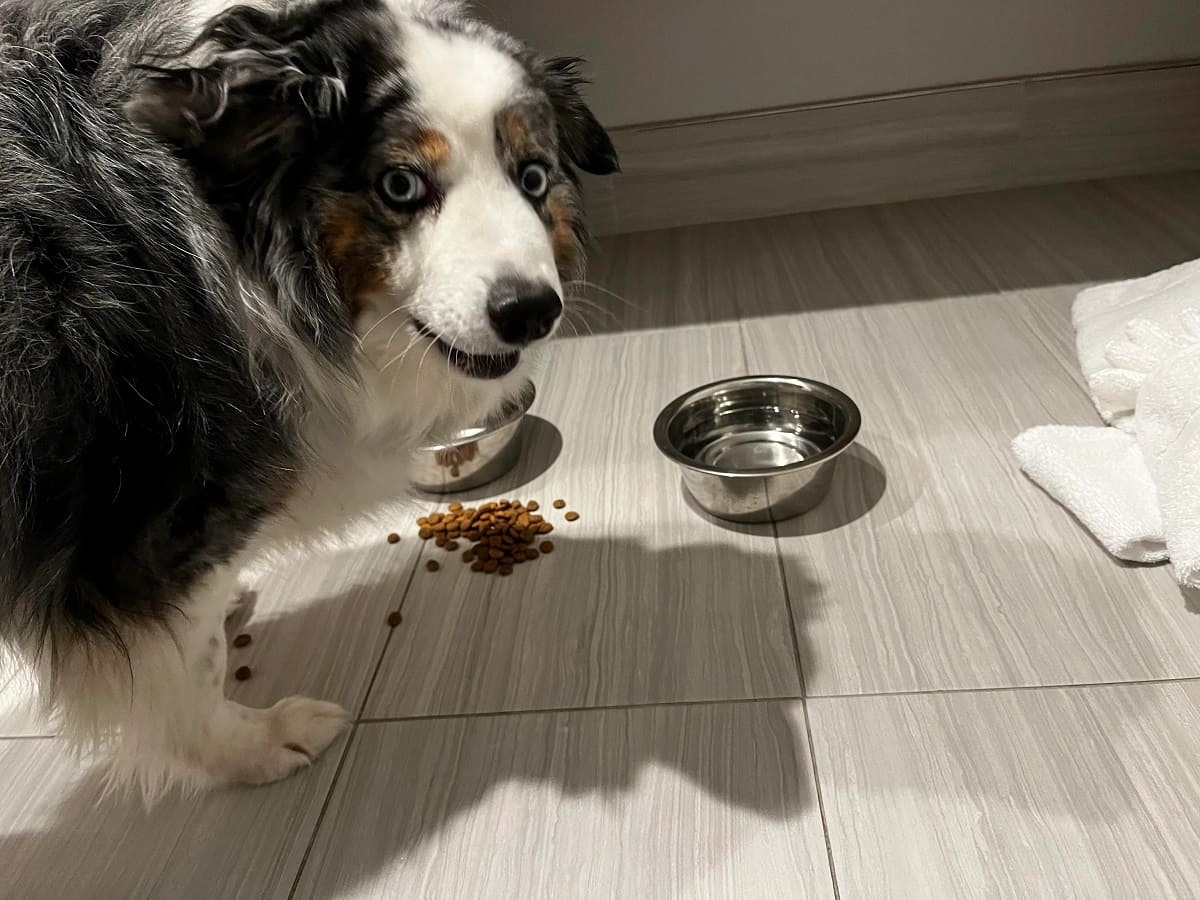

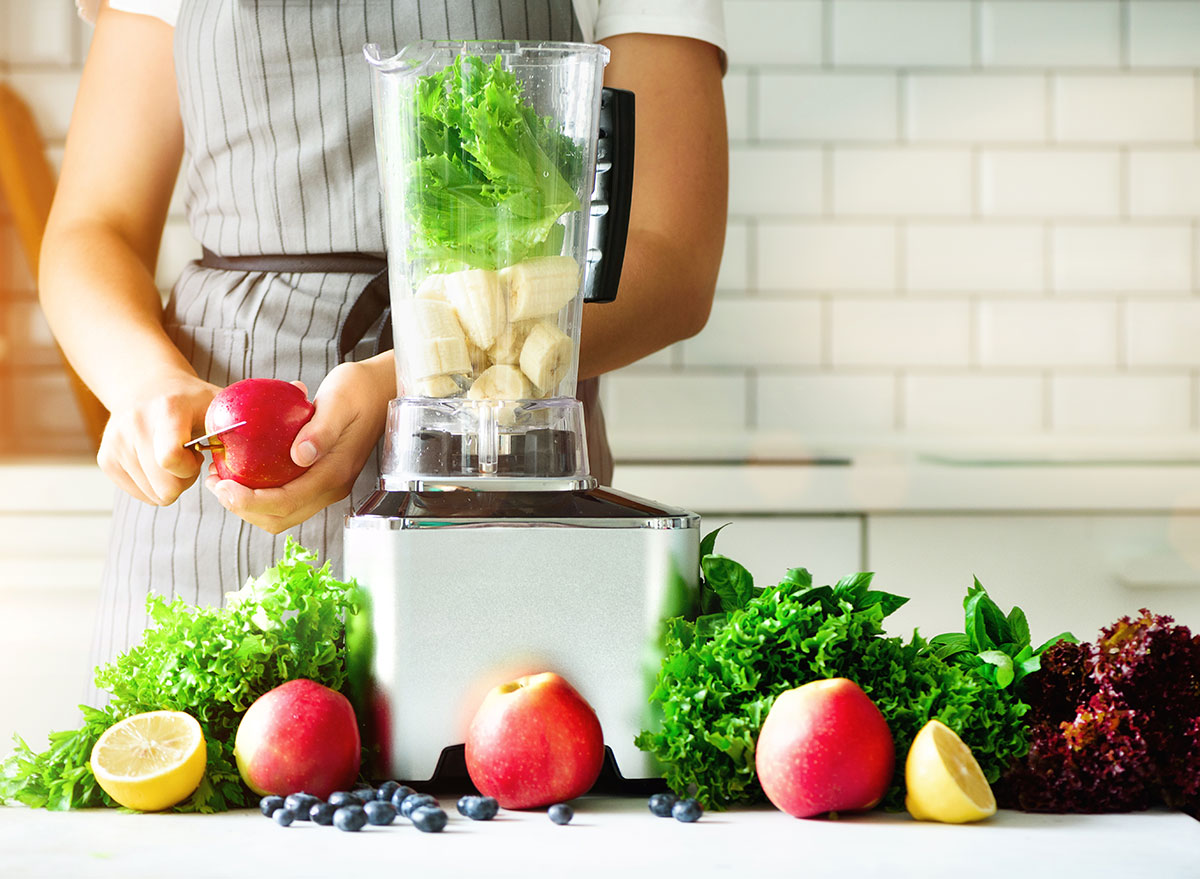
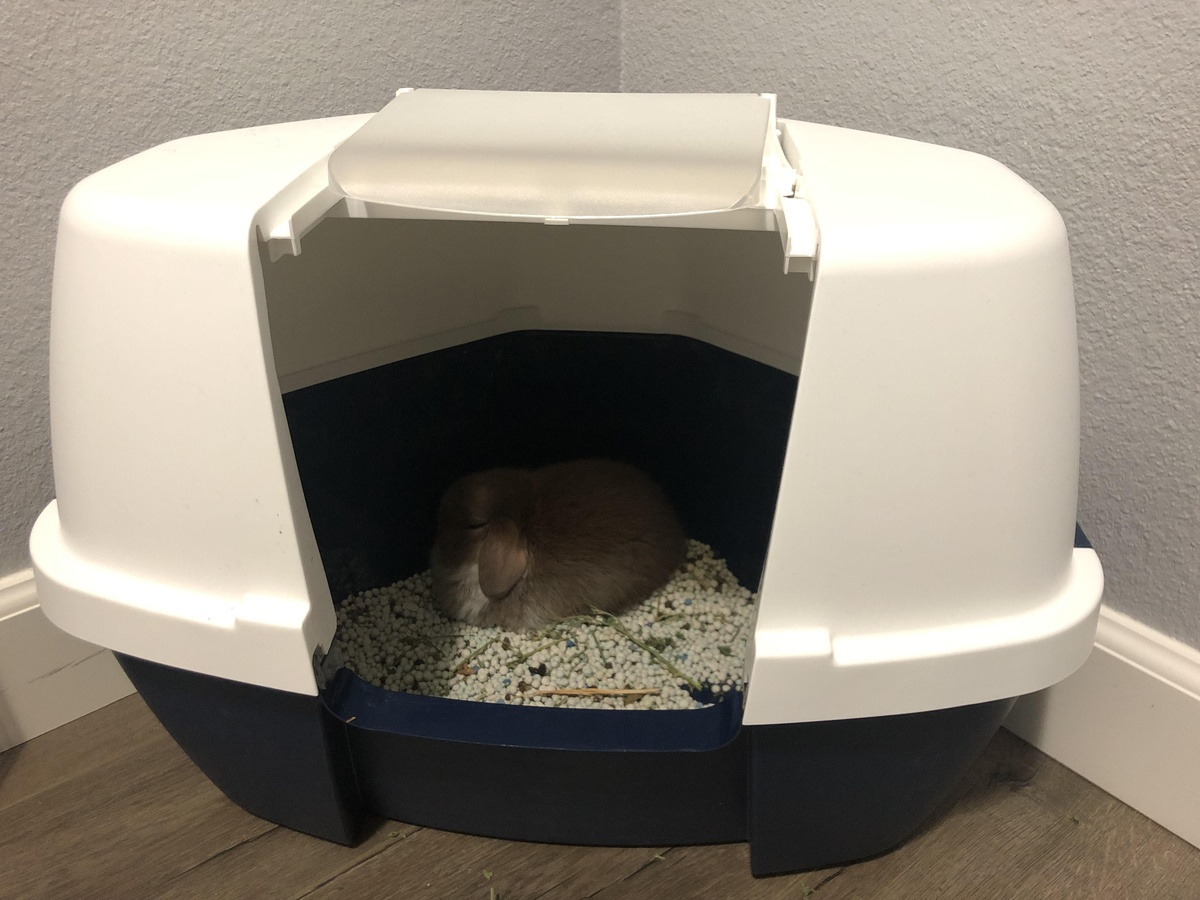

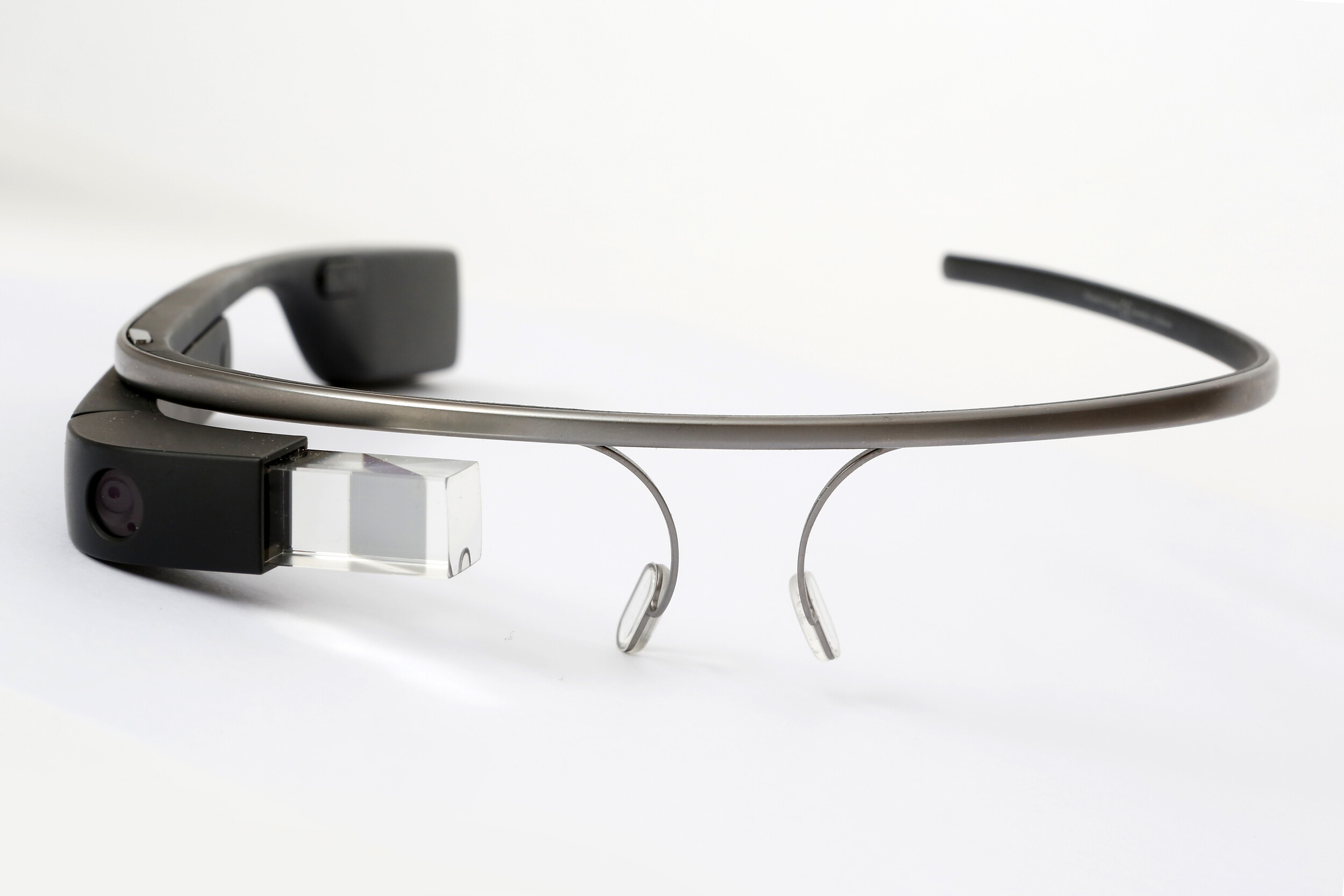



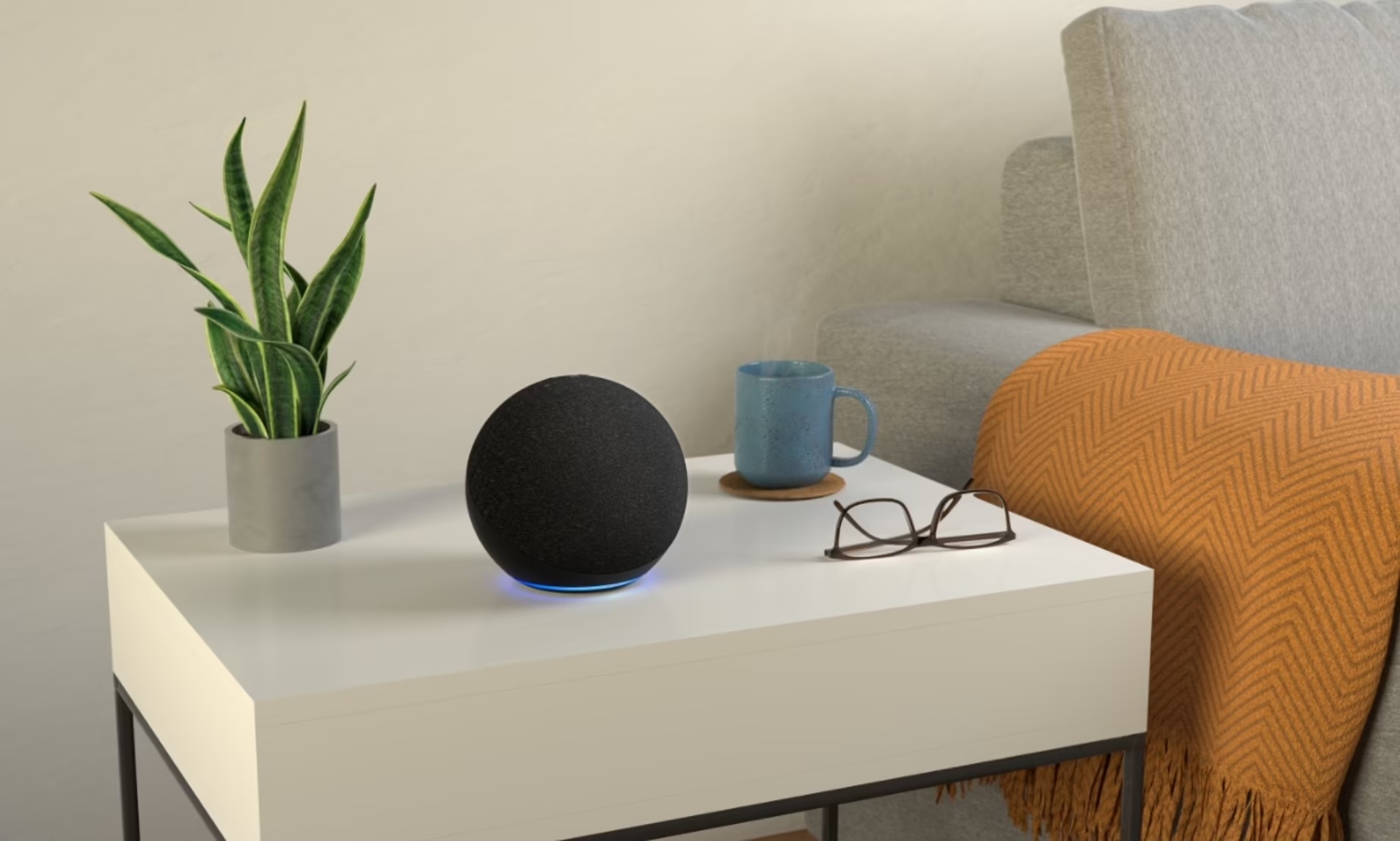




0 thoughts on “Why Did The President Put Vegetables In His Blender”